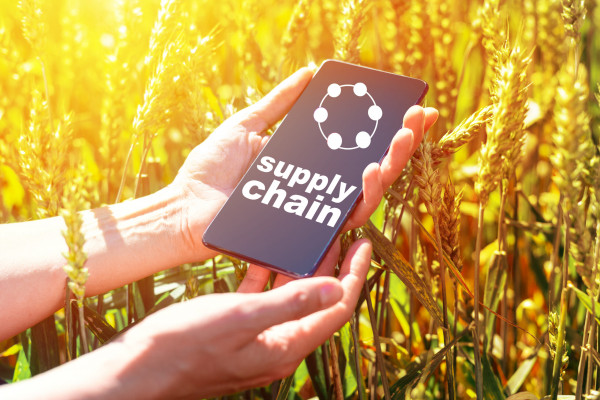From Field To Table: How Agricultural Equipment Shapes The Food Supply Chain

The journey of food from the fields to our tables is a complex and intricate process that involves various stages, each crucial for ensuring a steady and sustainable food supply. At the heart of this journey lies agricultural equipment – the machinery and tools that farmers rely on to cultivate, harvest, process, and transport crops. This piece will talk about how farming tools affect the whole food chain, from planting and growing to distributing and eating.
Cultivation And Planting: The Foundation Of Agriculture
The journey of food begins with the cultivation and planting of crops. Used farm equipment plays a vital role in preparing the soil, planting seeds, and ensuring optimal growing conditions for various crops. Tractors equipped with plows, cultivators, and seed drills are essential for farmers during the planting season. These machines not only save time and labor but also ensure precision and efficiency in the planting process, leading to higher yields and better crop quality.
Furthermore, advancements in agricultural technology, such as GPS-guided tractors and precision planting equipment, have revolutionized the way farmers approach cultivation. These new technologies help farms improve their growing patterns, lower their input costs, and have less of an effect on the environment. This makes the food supply chain more stable and long-lasting.
Crop Maintenance: Nurturing Healthy And Productive Crops
After crops are grown, they need regular care and upkeep to make sure they grow and develop in a healthy way. Agricultural equipment such as sprayers, fertilizers, and irrigation systems play a critical role in providing crops with the necessary nutrients, water, and protection against pests and diseases.
Modern sprayers equipped with advanced technology, such as variable rate application and automated spraying systems, allow farmers to apply pesticides and fertilizers with precision and accuracy, minimizing waste and environmental contamination. Similarly, drip irrigation systems and pivot irrigation systems help optimize water usage and ensure efficient delivery of water to crops, particularly in regions prone to drought or water scarcity.
Harvesting: Bringing Crops From Field To Fork
The harvesting stage marks the culmination of months of hard work and dedication by farmers. Agricultural equipment such as combine harvesters, forage harvesters, and grape harvesters are essential for efficiently gathering and collecting crops from the fields.
Combine harvesters are very useful tools that can gather many different types of crops, such as grains, oilseeds, and legumes. They are often called the "workhorses" of modern agriculture. These machines not only speed up the harvesting process but also minimize losses and ensure optimal grain quality through advanced threshing and separating mechanisms.
For speciality products like fruits, veggies, and grapes, special harvesting tools are used to carefully pick and handle the food without damaging it. Grape harvesters, for example, use gentle shaking or mechanical arms to remove grapes from the vines while preserving their integrity and flavor.
Processing And Packaging: Adding Value To Raw Produce
Once harvested, crops undergo various processing and packaging steps to prepare them for distribution and consumption. Agricultural equipment such as sorting machines, washing systems, and packaging lines are integral to these processes, ensuring that crops meet quality standards and safety regulations before reaching the market.
Sorting machines equipped with optical sensors and computer vision technology can quickly and accurately sort fruits, vegetables, and grains based on size, color, ripeness, and defects. This enables producers to meet consumer preferences, minimize waste, and maximize the value of their crops.
Washing systems and sanitization equipment play a crucial role in ensuring food safety by removing dirt, debris, and contaminants from fresh produce. These systems utilize advanced filtration and disinfection techniques to eliminate harmful bacteria and pathogens, reducing the risk of foodborne illnesses.
Packaging lines equipped with automated filling, sealing, and labeling machinery streamline the packaging process, allowing producers to efficiently package and label their products according to market requirements. Additionally, packaging materials such as biodegradable films and compostable containers help reduce environmental impact and promote sustainability throughout the food supply chain.
Distribution And Logistics: Connecting Producers With Consumers
Once processed and packaged, food products must be transported from farms to distribution centers, grocery stores, and ultimately, consumers' homes. Agricultural equipment such as trucks, refrigerated trailers, and storage facilities play a vital role in facilitating this complex network of transportation and logistics.
Refrigerated trucks and trailers equipped with temperature control systems ensure that perishable food products, such as fresh produce and dairy products, remain fresh and safe during transit. These vehicles use modern refrigeration technology to keep the temperature and humidity at the right amounts. This keeps the goods' quality and shelf life.
Warehouses and cold storage units are two types of storage spaces that are needed to keep food inventory and keep track of it. These buildings have temperature control systems, software for managing inventory, and automatic handling equipment to make the best use of their store space and make sure that food gets to the right places quickly.
As we look towards the future, continued investment in agricultural equipment and infrastructure will be essential for meeting the growing demands of a global population while promoting environmental stewardship and food security for generations to come.
Conclusion
From the fields to our tables, agricultural equipment plays a pivotal role in shaping the food supply chain and ensuring a steady and sustainable food supply. By leveraging advanced technology and innovative solutions, farmers can cultivate, harvest, process, and distribute crops more efficiently and effectively than ever before. Our world's population is growing, and we need to keep investing in farming tools and facilities to meet their needs. This way, we can protect the earth and make sure that future generations will have food.
